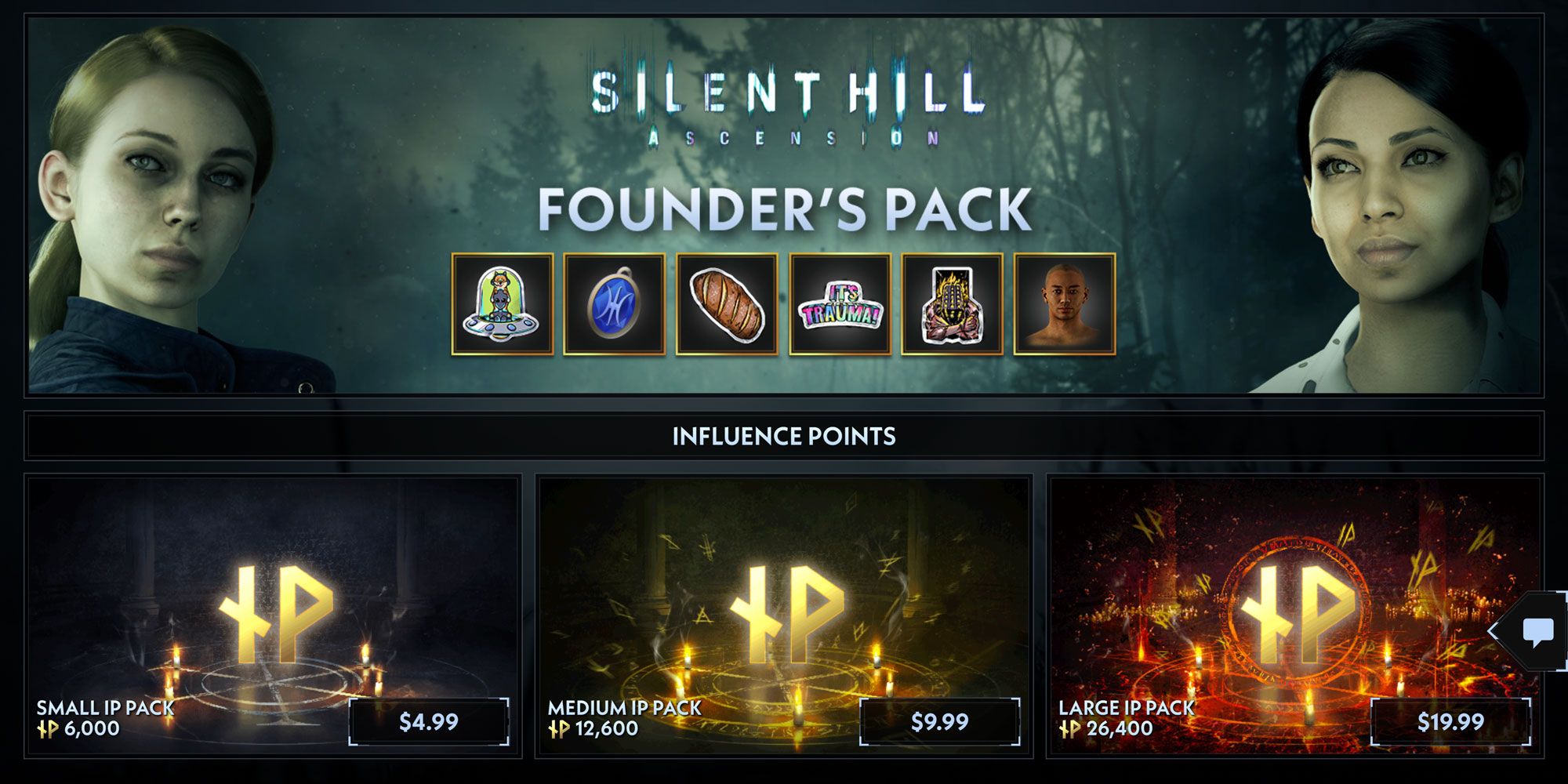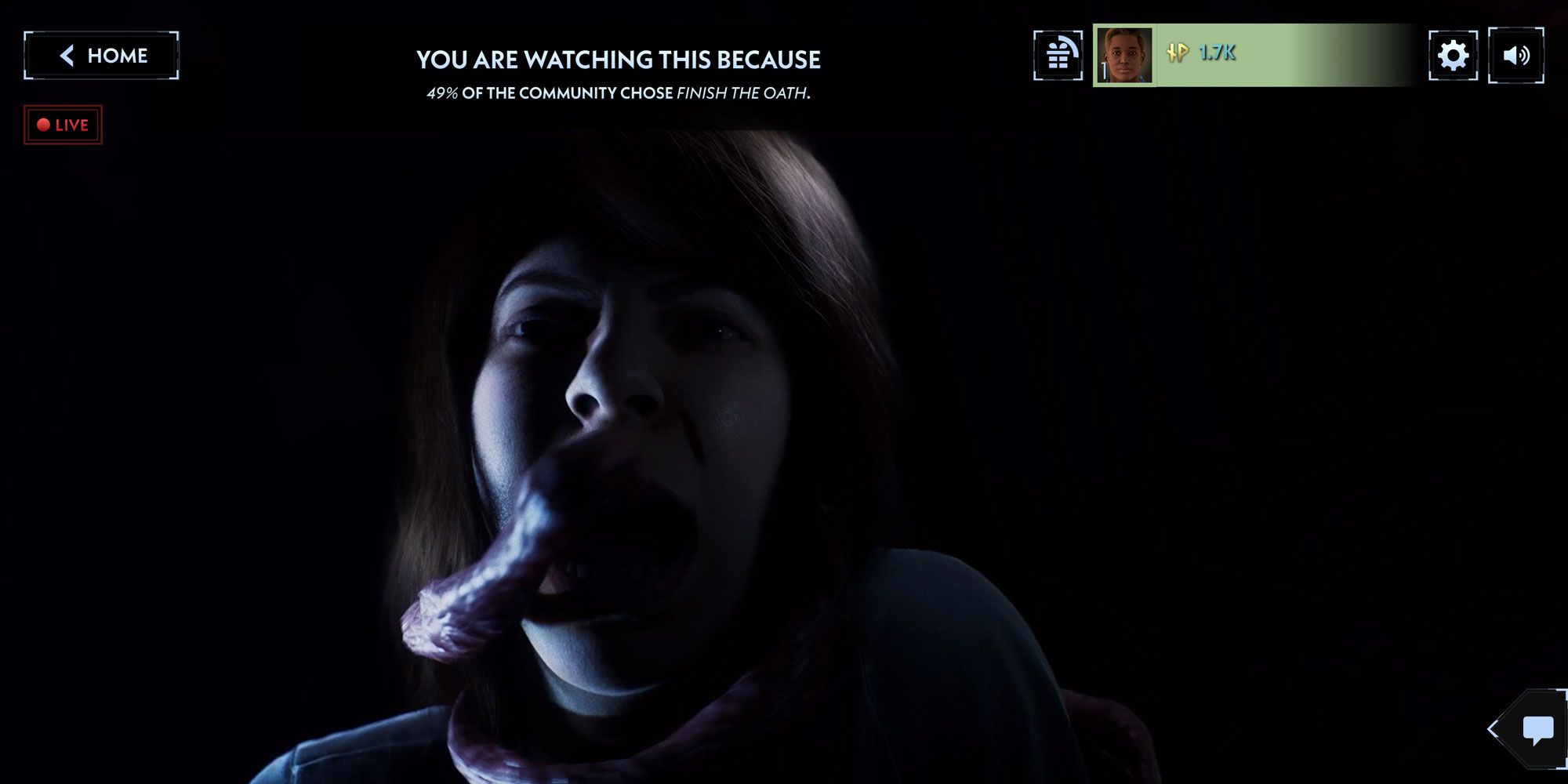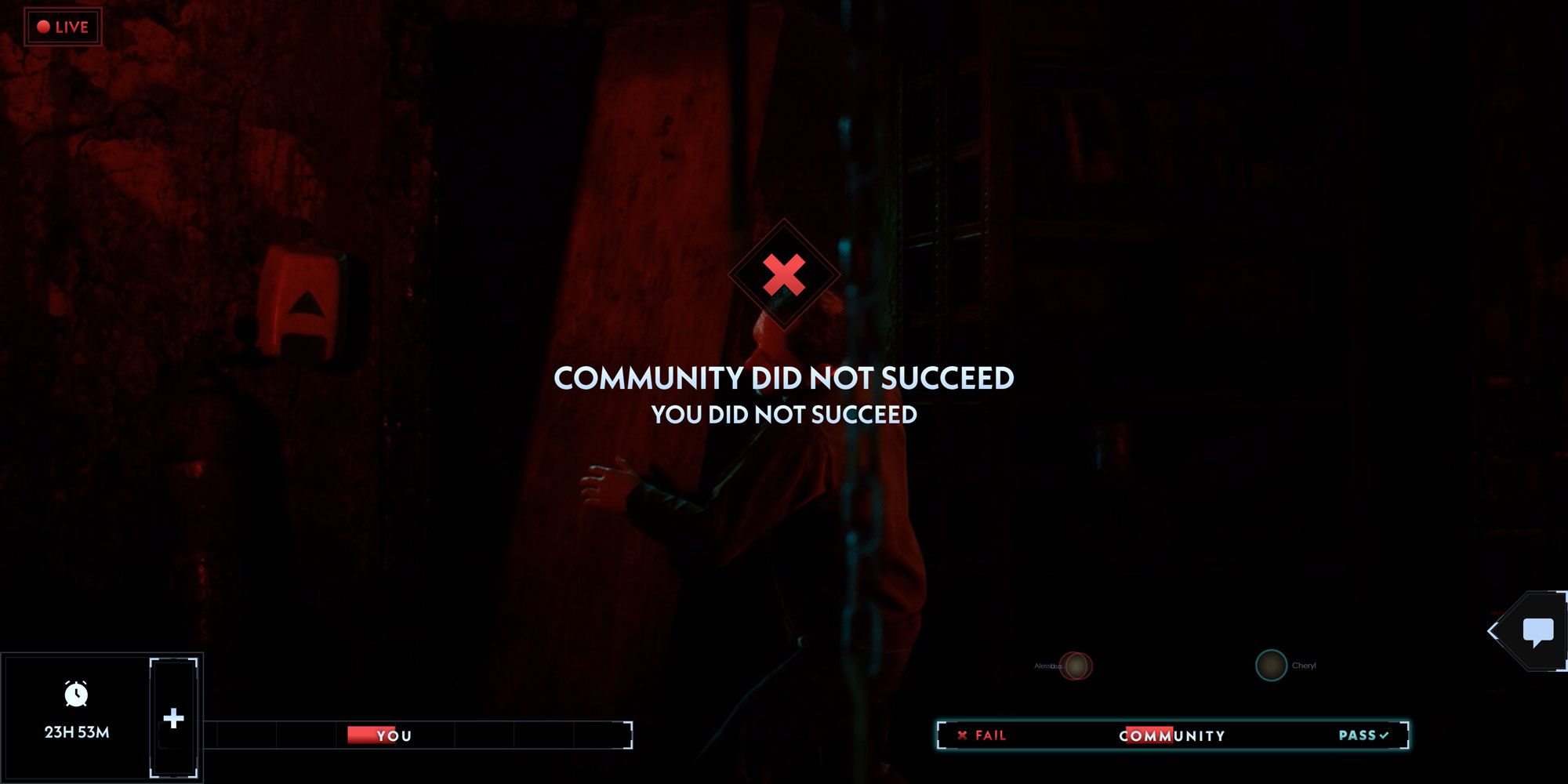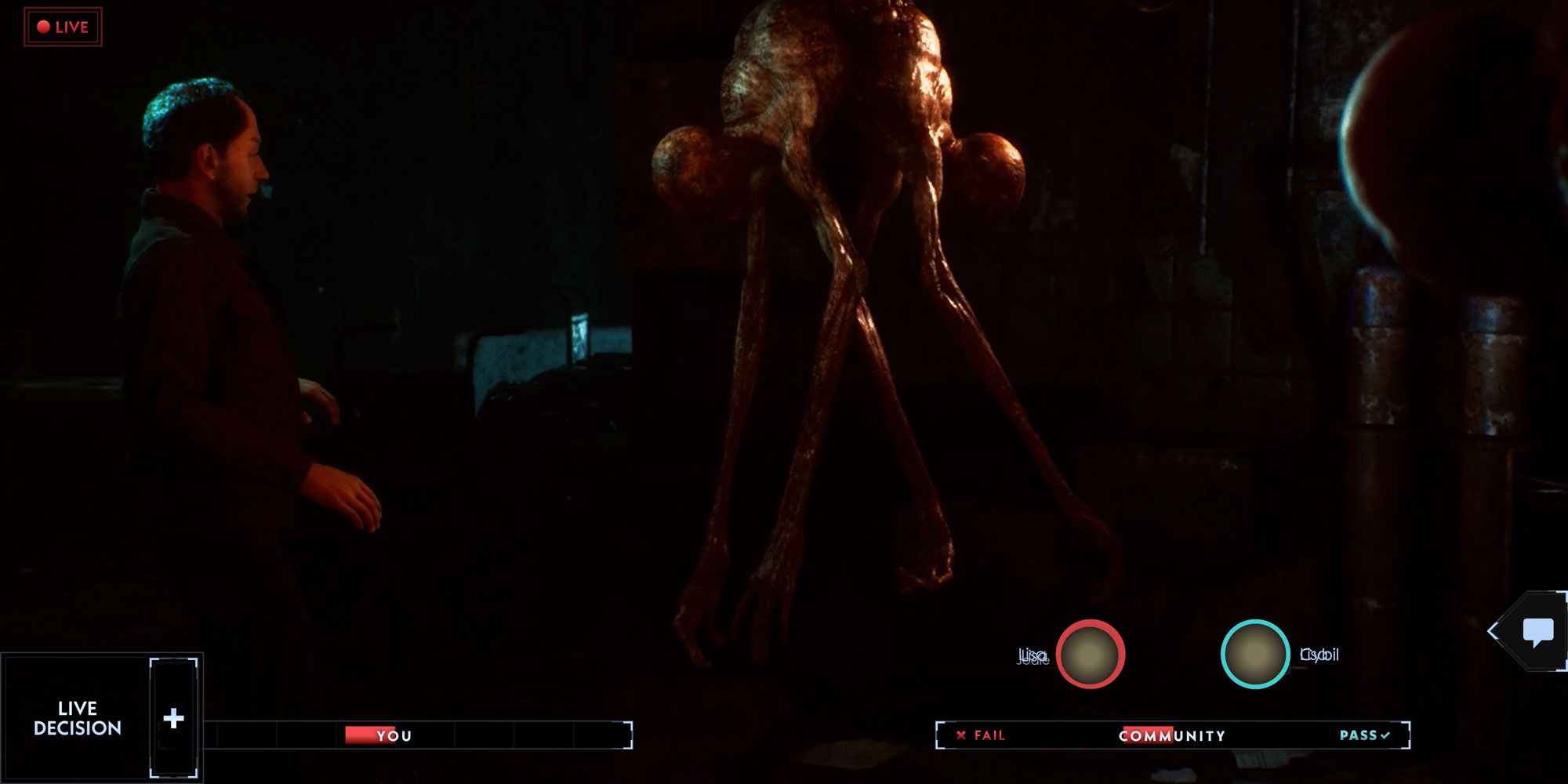I went into Silent Hill: Ascension with few expectations, but that doesn’t mean I could resist indulging in a bit of excitement. This is the first new Silent Hill experience in years, and even though it’s clearly a somewhat gimmicky web-based ‘community decides what happens’ interactive drama-type thing, it’s nevertheless the first of a whole new generation of Silent Hill projects, which also include Silent Hill f, the Silent Hill 2 remake, and Silent Hill: Townfall.
Each of these projects is being created by a different studio, so there’s no point reading too much into this as some kind of sign of where the series proper is heading, but I came away from the first episode of Silent Hill: Ascension thinking that developer Genvid Entertainment has no perspective on what makes Silent Hill Silent Hill, or for that matter what makes good horror good horror.
A Shaky Start
It took me a little while to orient myself in the noisy experience of Silent Hill: Ascension. Hopping on a couple of minutes before the ‘live’ experience started, the game’s trailer began to play, but I couldn’t seem to watch it without hearing the Ascension devs hyping the show up in the background as it approached. Once that was over, I was taken straight to a Season Pass screen, trying to get me to buy a ‘Founder’s Pack’, which offered various little digital ‘gifts’ including a garish pink symbol saying ‘IT’S TRAUMA’ (because Silent Hill’s core theme of trauma is something to be commodified and campified, apparently).
You can also buy various bundles of ‘Influence Points,’ which cost between $5 and $20, and give you more currency with which to vote on the various narrative decisions you (alongside the rest of the viewership) make throughout the show.
So you can buy votes, essentially, and while I wasn’t too chuffed by the idea that this narrative experience (and the series’ canon, according to the devs) would ultimately be driven by impulsive kids who’d gotten their hands on their parents’ credit cards, I switched off the chat-box sidebar of inane one-way ramblings from viewers, and tuned in.
The story in the first episode is split into two distinct narratives—one set in a town called Hope’s Junction in Pennsylvania, where a cult called The Foundation is carrying out iffy rituals that seem to be summoning demons, the other in Norway, where in a remote cabin in the wintry wilderness, a man named Karl Johansen is looking after his sick mother.
It’s a decent enough setup. The story with the demanding bed-ridden mother, who hurls all kinds of vitriol at her son while he cares for her, has strong echoes of Silent Hill 2’s core narrative involving James and his cancer-ridden wife Mary. Sure, it may not be wholly original (apart from the intrigue of the Scandi setting), but Silent Hill’s been through some rough times storywise, so nothing wrong with playing it safe as far as I’m concerned.
Horror Burnout
The problem is that the game blows its horror load way too quickly. Within moments, Karl is being chased by several generic Silent Hill ooglies through the Other World, while in the Hope’s Junction story we very quickly see a monster get summoned and kill someone. Having just been playing cool slow-burners like Alan Wake 2 and The Quarry, which understand the value of building suspense, the throwaway introduction of multiple monsters so early in the story just feels cheap. It also seems to commit the cardinal sin of latter-day Silent Hill games by using the monsters in a generic fashion rather than tailoring them to the traumas and subconscious weirdness of the characters being beset by them. Tonally, the horror sequences feel far more ‘Resident Evil TV series’ than ‘Silent Hill.’
There are three of four choices for the viewership to make throughout the 40ish-minute episode, and while I’m going to dedicate a whole separate piece to talking about the inherent problems of vote-based narratives like this, I’m going to say here that the presentation of the choices—which range from choosing whether to destroy an incriminating piece of evidence from the police or handing it in, to being honest with someone about your role in a recent tragedy to bollocking them for even asking—invariably skews the votes towards the most boring possible decisions.
As to the impact of these decisions, I have an inkling that the choices viewers make may be somewhat illusory, based on an unexpected and laughably bad QTE sequence that ambushes you out of nowhere late into the episode.
The sequence occurs without warning, meaning that I (and much of the viewership, based on the dynamic bar showing people taking action) failed several of the first QTEs as I fumbled for my mouse on the couch before comprehending what was asked of me. The sequence entails Karl wandering into the Other World again, this time bouncing around a veritable abattoir of Silent Hill enemies, with you swiping and clicking and tapping to get him through it safely.
As a horror sequence, it’s legitimately laughable. No suspense, no dread, no nothing, as he stumbles from one grisly goon into the next, backing away from one creature only for another to drop down from the top of the screen like a puppet ghost on an archaic ghost train ride in an English seaside resort. I laughed out loud when Karl inexplicably picked up a rock, threw it at one of the ceiling danglers, then ran past it to leave the area (why throw the damn rock, Karl? Are you TRYING to antagonise these creatures?). It’s really poor, exacerbated by awkward animations and flat atmosphere.
But even though the viewership officially failed this sequence, the on-screen events seemed to go perfectly smoothly, with the only consequence being that Karl ‘lost a little hope’ after our collective failing of the task at hand. It all left me wondering whether our involvement really matters, and if it does whether this should seriously be crowbarred into Silent Hill canon.
A Descending Feeling
This is not a good start for Ascension. The underlying drama is decent, though the acting and animations are wooden, and most importantly it opts for a rather action-packed ‘carnival ride’ approach to the horror, not unlike the movies and latter-day games, whereas Silent Hill at its best has always been more subtle and slow-burning than that. The way it’s monetised also doesn’t feel right, effectively putting the series’ canon into the hands of those happy to throw money at it (or trudge through some quite tedious puzzles to earn some extra voting currency).
I’m going to vaguely keep up with this inauspicious revival of sorts for Silent Hill, but so for Ascension has given me a decidedly descending feeling.

